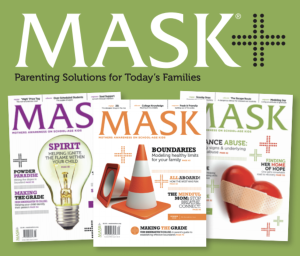
From Face to Screen
May 19, 2021
6 Things People With High EQ Do Well
May 22, 2021One of the most prevalent addictions in older kids is drugs and alcohol. Addiction can occur with any mood-altering substance, and the faster it takes effect, the greater the chance of addiction, according to Dr. Scott Teitelbaum, medical director of the University of Florida, Florida Recovery Center and author of “Addiction: A Family Affair.”
Some people may start using drugs or alcohol as a way to self-medicate and relieve the symptoms of an underlying condition such as depression, anxiety or Attention Deficit Hyperactivity Disorder (ADHD). People with depression often turn to stimulants, while individuals suffering from bipolar disorder, ADHD or chronic anxiety may be drawn to the calming effects of alcohol or pain medication.
The risk of addiction varies depending on the substance. The nicotine found in cigarettes and chewing tobacco ranks as one of the most addictive drugs, with about 30 percent of people who try it becoming addicted, followed by heroin, cocaine and alcohol. Contrary to popular opinion, stimulants and marijuana are addictive. About 10 percent of people who use marijuana will develop a chemical dependency.
Early Drug Use Ups Addiction Risk
Substance use does not necessarily lead to addiction or problem use, but trying any drug or alcohol increases the risk. As the quantity and frequency of use increases, a social drinker or recreational drug user starts to move toward addiction. Delaying the first use of drugs or alcohol can dramatically cut the risk.
“We know that, regardless of genetics, people who start using drugs or drinking before the age of 15 are roughly four times as likely to have an addictive disorder,” says Teitelbaum. “The younger the age, the greater the likelihood of a problem.”
The three most common substance addictions among adolescents and college-age kids are smoking, alcohol and marijuana, according to Ruben Baler, Ph.D., neuroscientist with the National Institute on Drug Abuse (NIDA).
“We know that the brain is a work in progress all the way through your early 20s, so it’s very actively developing,” says Baler. He compares the young developing brain to programming a computer. “What drugs do is they scramble the letters in the keyboard during the actual programming of the computer. That’s why the kind of experiences we have during this period are so critical.”
With kids as young as 5 or 6, the biggest danger is inhalants. Common household items are often used as inhalants, including glue, permanent markers, nail polish remover, gasoline, cleaning solvents, butane cigarette lighters and propellants used in commercial food or cleaning products. They can cause serious brain damage and even death when intentionally inhaled. Because these items are found in practically every home, parents need to educate their children as early as possible about the danger of inhalants. Baler also advises parents to closely monitor their children’s online activity, where they can easily learn how to use these dangerous substances to get high.
On high school and college campuses, experts have seen an alarming increase in marijuana and prescription drug use. With the legalization of marijuana in some states, the drug has become widely available, and its inherent dangers have been drowned out by the voices of politicians and recreational users, says Teitelbaum.
Use of ADHD drugs, such as Ritalin or Adderall, are also increasing among older kids. With fierce competition on high school and college campuses, students often take these psychostimulants to improve their concentration so they can study longer and boost their grades, ignoring the risk of side effects or addiction.
MASK the Parenting Magazine a quarterly publication providing solutions for Today’s Families.
The parenting manual offering solutions to the modern-day challenges families face. From Pre-K
through College stay up to date on the modern day issues families face.
Are you up to date on the issues your child is facing?
MASK Mothers Awareness on School-age Kids offers parenting solutions for today’s families. MASK tackles important topics – from drugs and alcohol to bullying and Internet safety -and gives students, parents and the community the knowledge and tools to manage these potential challenges.
Subscribe today! https://www.tools4teaching.com/product/mask-the-magazine/
Download and share the MASKmatters app now! Made for children, parents, teachers and in Spanish.
Have solutions at your fingertips
Available free on apple and google play links below
Apple https://apps.apple.com/us/app/maskmatters/id1482305692
Google Play
https://play.google.com/store/apps/details?id=com.maskmatters.maskmattersapp&hl=en_US&gl=US




